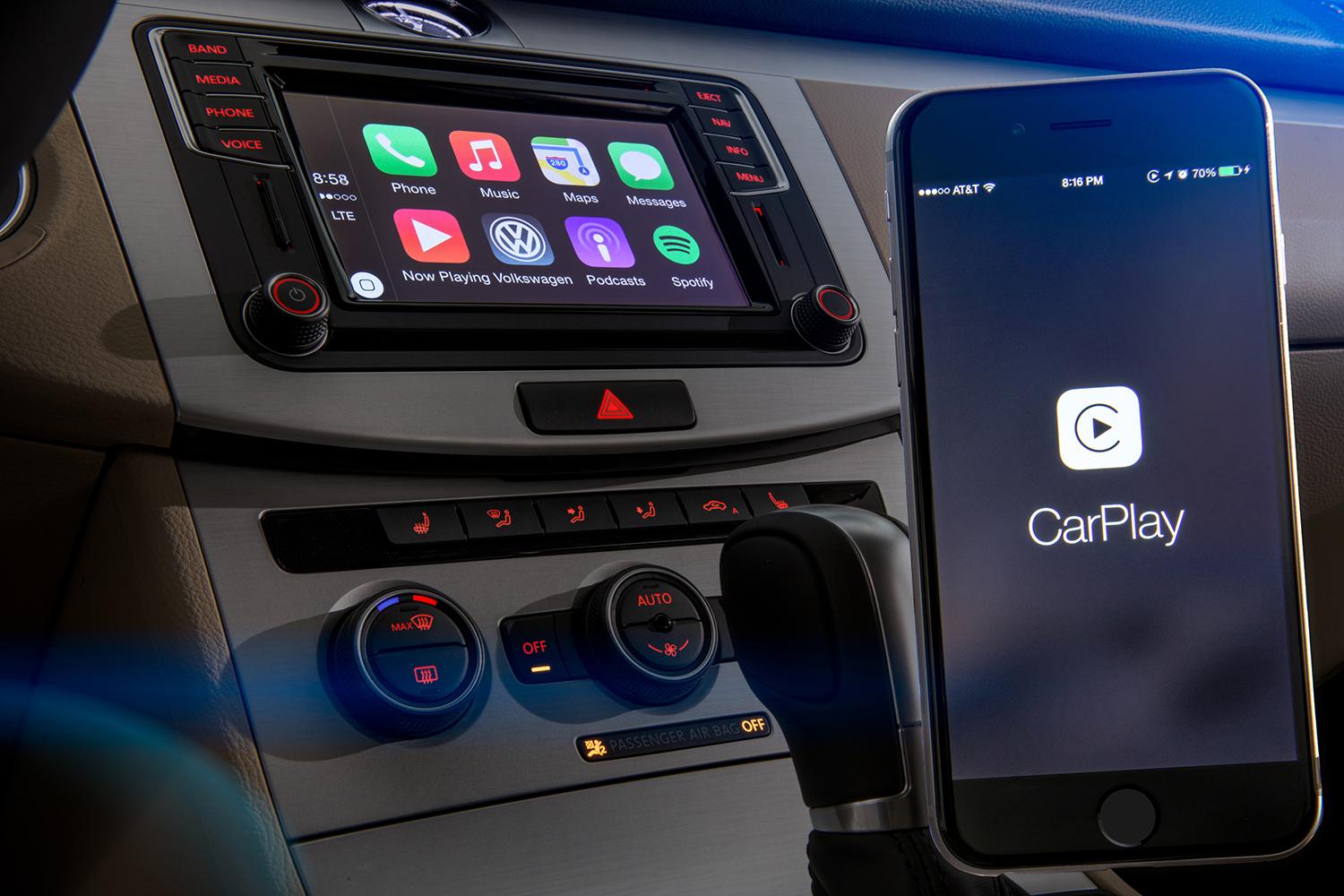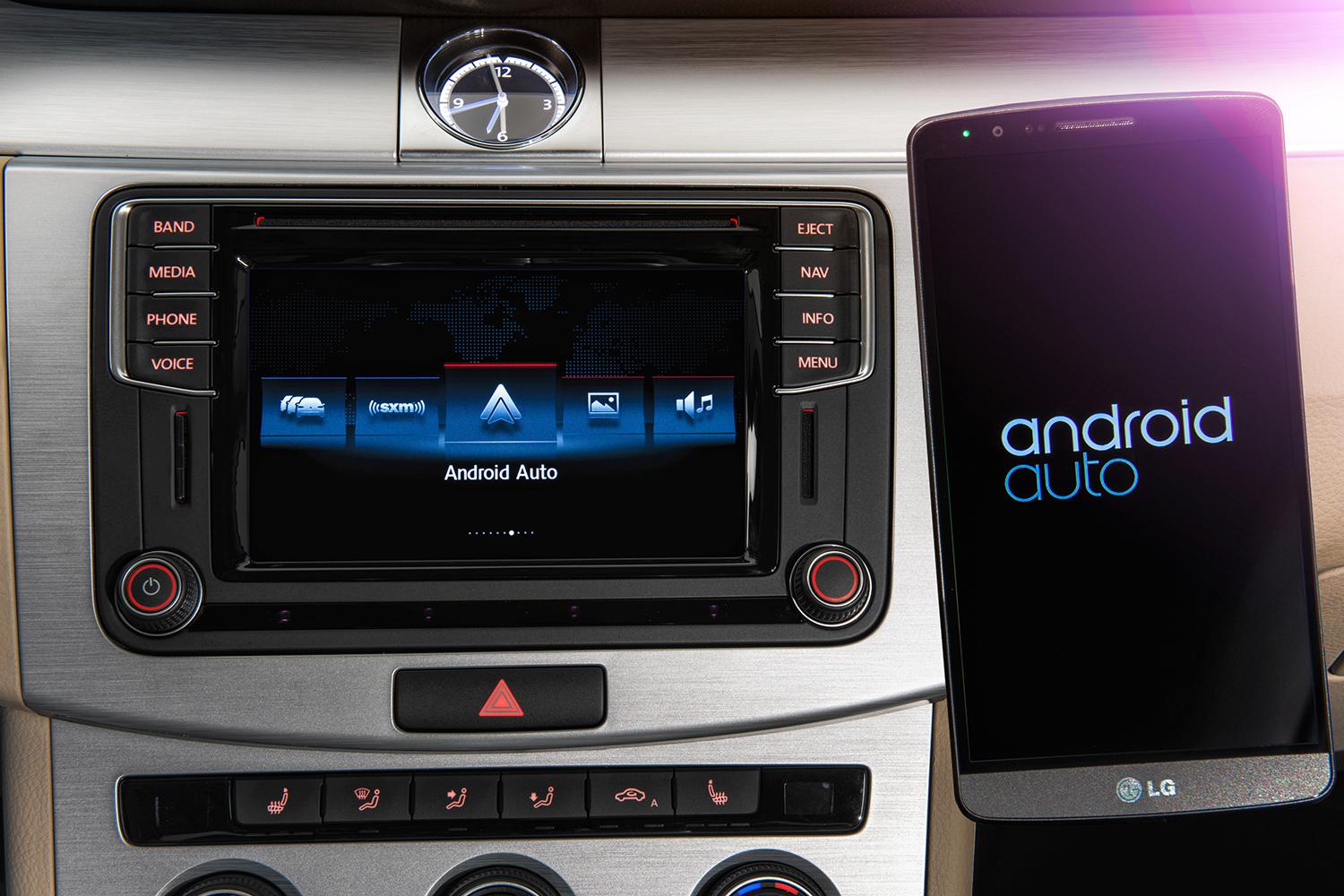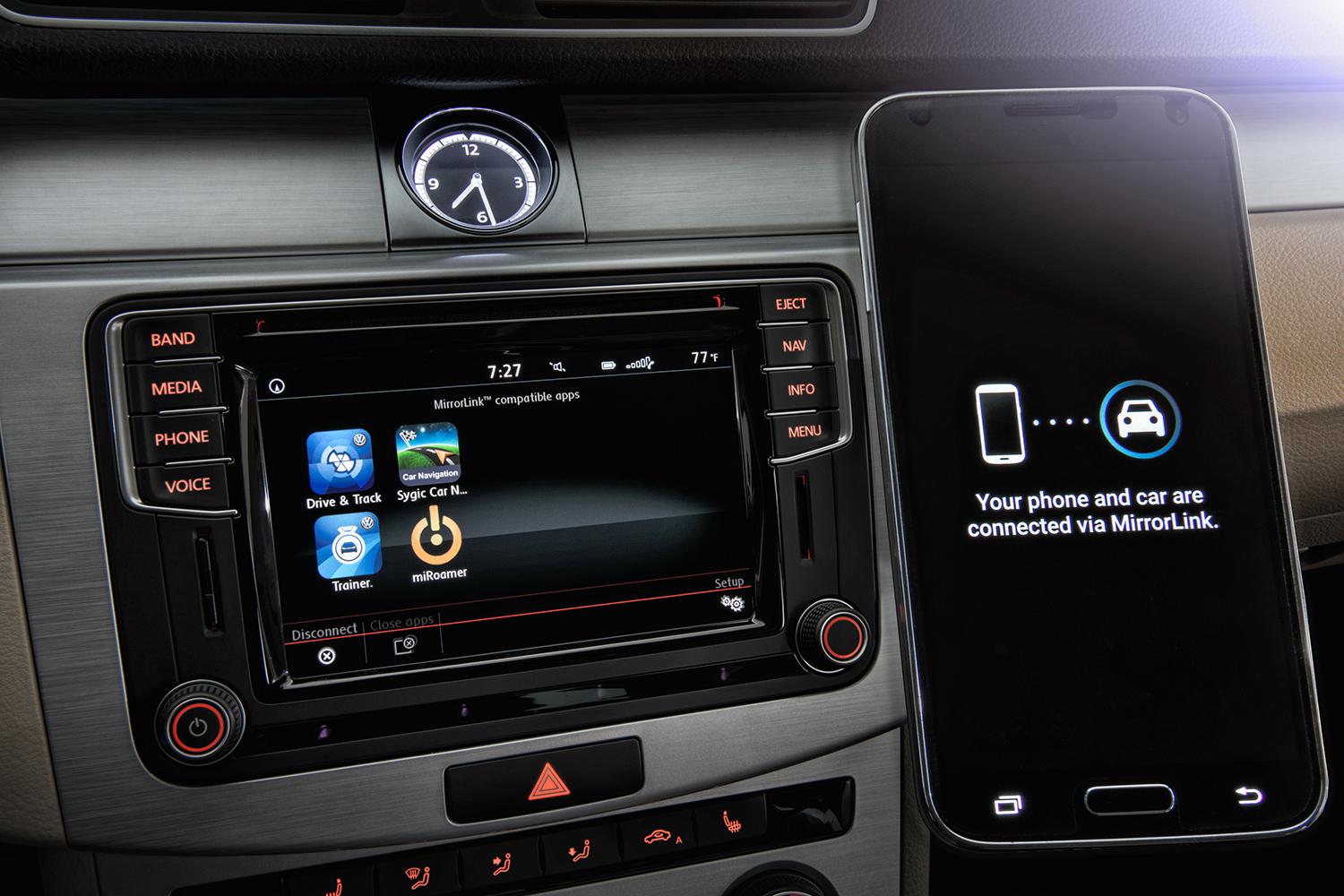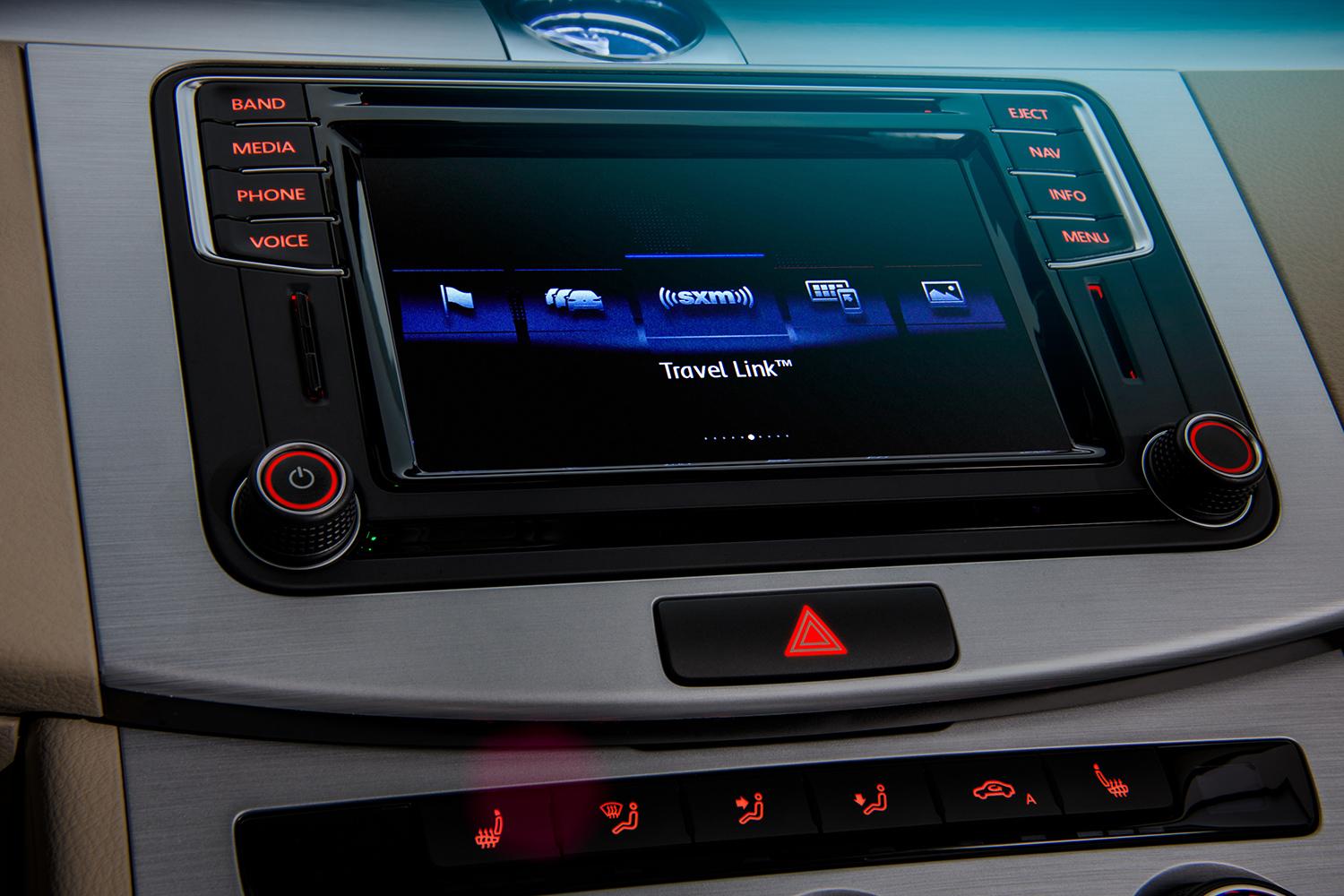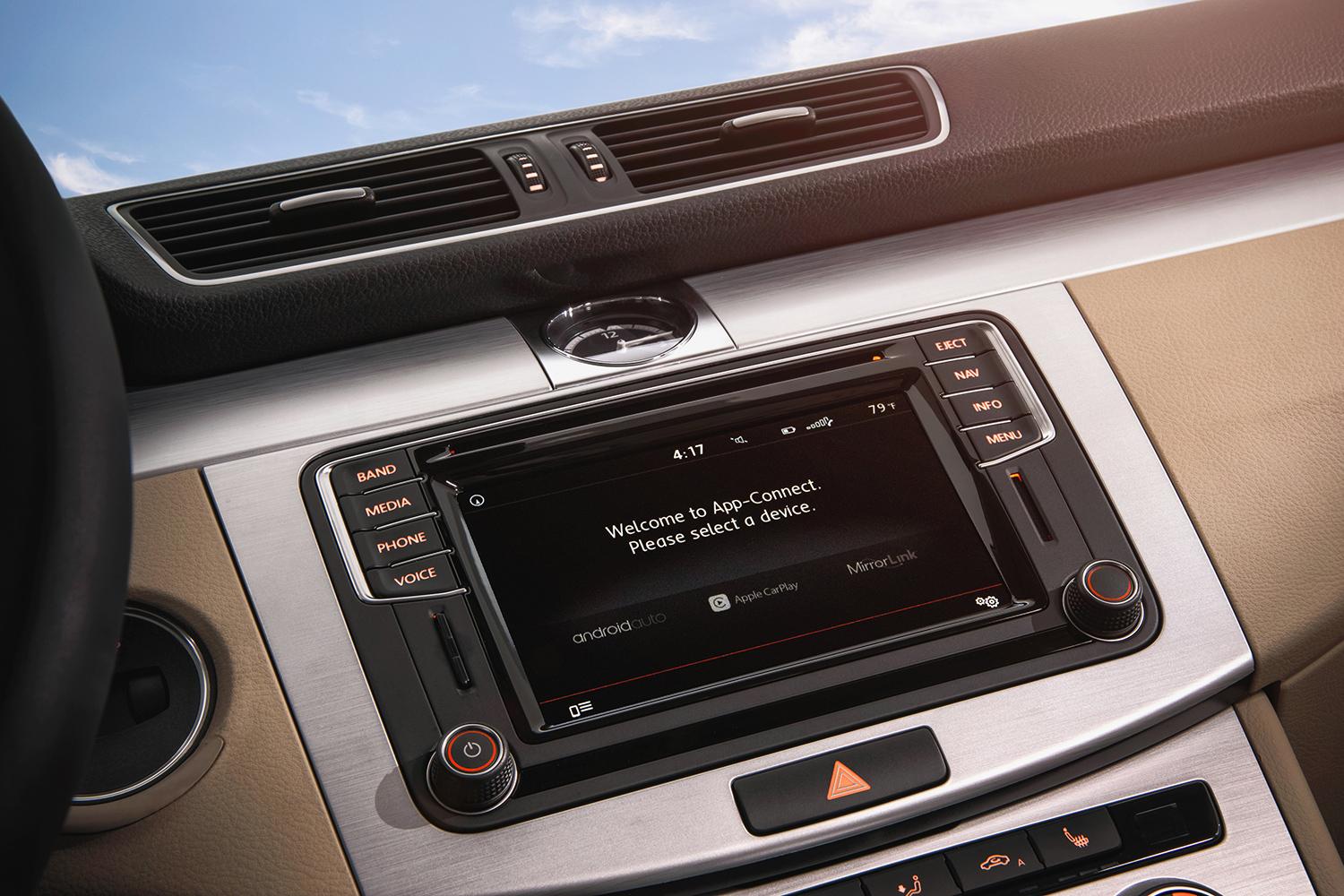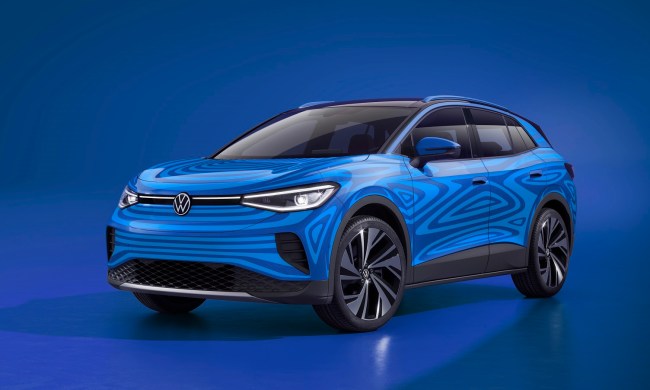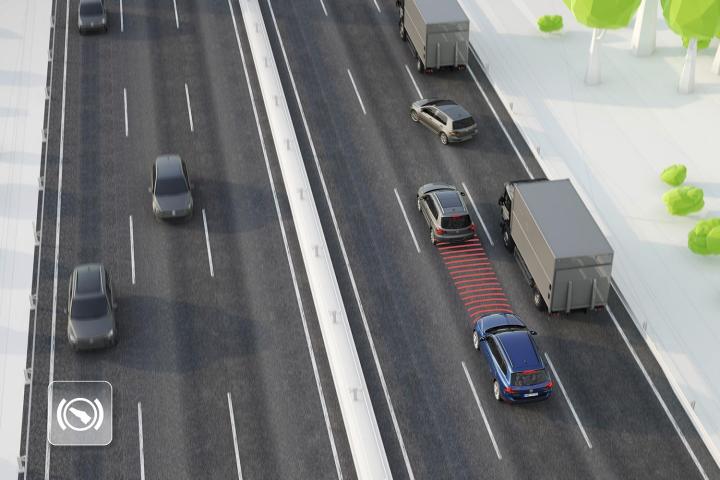
There’s a technological arms race happening right now, and it’s playing out in your car’s dash.
While 2,500cc twin-screw superchargers and carbon-fiber chassis might grab headlines, it’s technology that really wows. Tech can effortlessly stream your favorite podcasts on your commute, intelligently route you around traffic jams — and stab the brakes faster than you can react when a deer jumps out in front of your car. When they’re done ogling the muscle, most car buyers want that stuff.
That’s why VW opened its Electronics Research Laboratory (ERL) in Belmont, California way back in 1998, before most drivers had even heard of an MP3 – much less Spotify. The lab taps Silicon Valley’s notoriously brilliant talent pool to bring cutting-edge software and hardware to Volkswagen’s products. And it’s not just PR speak – VW tests and validates the electronics in every car it sells stateside here. And there’s a doozy of an update coming for 2016. The cars may not be in the showroom yet, but Digital Trends had a chance to poke around behind the scenes and learn about the features that will make this year’s Volkswagens the smartest yet.
Before self-driving cars can walk, they’ll crawl (to a stop automatically)
We tend to imagine that autonomous cars will crop up overnight and make drivers superfluous, but in reality, the shift from human to robotic drivers will happen slowly. VW’s Driver Assist technology represents the first baby steps in that direction, offering a number of clever features that do little to alter the enjoyment of driving, but have the potential to make day-to-day tasks much less of a hassle and make public roads safer.
You could set ACC while cruising down the highway and never need to touch the brake and gas again until you’re ready to exit.
Adaptive cruise control (ACC) lets drivers set how fast they want to drive and how far they want to stay away from the car in front of them, then reacts to traffic and speed fluctuations without the need for the driver to make any changes. For instance, if the car in front begins to slow, with ACC enabled your vehicle will slow down accordingly, maintaining the following distance you set.
It works from a complete stop to 95 miles per hour, which means that in theory you could set ACC while cruising down the highway and never need to touch the brake and gas again until you’re ready to exit. Even stuck in stop and go traffic, the car will continue to control the throttle and brake for you.
We took out a test vehicle for a short loop around Belmont, and ACC did not fail to impress. Setting it up took just a few seconds while we plodded along the route. After we got over the initial trepidation that we might end up decorating the rear bumper of the Mercedes-Benz in front of us with the front fascia of a VW Golf, the system reacted exactly as intended — the speed fluctuations are gradual and comfortable, and when needed, the car will happily come to a complete stop and wait before setting off again once there’s enough space to do so. This is big news for anyone who spends time in metro freeway traffic on a regular basis.

When it’s time to ditch your wheels, Parking Steering Assistance and Park Distance Control make tight urban maneuvering less of a hassle – not only in parallel spots, but perpendicular ones as well. We gave it a try. You need to pull up between 20 and 80 inches away from the vehicles next to the parking spot, then press the Parking Steering Assistance button — once for a parallel spot, two or three times for a perpendicular spot, depending on whether the open space is on the right or left of the car (visual cues on the dash make it obvious).
At this point, the VW engineer riding shotgun told us to bring the vehicle past the open spot at up to 25 miles per hour so sensors on it could measure the spot. Once enough data has been gathered, the system alerted us that it was ready to take over – at least partially.
The vehicle did the wheel work, spinning the wheel like a car possessed.
Then it was time for a leap of faith: We removed our hands from the steering wheel completely and only operated the brake and throttle. The vehicle did the wheel work, spinning the wheel like a car possessed until it had positioned us appropriately in the parallel parking demonstration, and then later aligning us equidistant on either side of the cars next to us. Meanwhile, Park Distance Control provided visual and audio warnings about our proximity to the other cars as we settled into the space. The system expects you to do the braking, but if you’re derelict in your duties it will still attempt to avoid hitting the other vehicle by aggressively applying the brakes. Just don’t expect it to be a particularly pleasant experience.
Interestingly, VW programmed the system to back into spots, rather than parking head-in. “It makes the situation less dangerous later on when you’re exiting the space,” representatives explained.
Tech in your dash
Assisted driving may soothe the chores of driving, but VW’s newest infotainment system, dubbed MIB II, makes it more fun.
Although the first generation of VW’s MIB system was released just a year ago, the company clearly isn’t resting on its laurels. It can’t. These days, the lion’s share of vehicle infotainment systems are woefully dated by the time they hit showroom floors. While most of us are moving up a generation in mobile technology every two years or so, automakers are still working on a roughly four-year game plan when it comes to major infotainment system updates, further compounding the problem.
VW will break that cycle with MIB II, debuting it on 2016 model year cars. Compared to last year’s models, it brings a faster processor, more memory, and improved display resolution with touchscreen functionality as standard on all models.

MIB II will be initially offered in four different flavors, with screen sizes from 5 inches to 8 inches. Base trim VWs will get the Composition Color model, but stepping up to Composition Media nets you a larger 6.3-inch, 800 × 480 capacitive touchscreen that enables gesture controls like swiping and pinch-zooming. The higher model also packs the App-Connect smartphone integration system, which includes Apple Car Play, Android Auto, and MirrorLink functionality.
Another step up, Discover Media includes all these features plus 2.5D navigation. The range-topping 2016 eGolf SEL Premium will get the Discover Pro unit, which features an 8.0-inch capacitive touchscreen, enhanced 3D navigation, and a 10GB hard drive. (Look for a full review of the MIB II infotainment system coming soon.)
Car-Net puts your VW online, for a price
For those familiar with GM’s OnStar service, Car-Net will likely feel familiar. You can use it through a PC or a mobile app, or a dedicated button within equipped cars will also activate it. Most features of Car-Net will be provided to new buyers for free for the first six months of ownership, after which they run $18 a month, with discounts offered on longer single- and multi-year subscription renewals.
VW divvies Car-net into three sections: Security & Service, Guide & Inform, and App-Connect.
If anything felt like unfinished business, it really came down to decisions beyond Volkswagen’s control.
Security and Service features include Automatic Crash Notification, which sends a notification of a collision to an operator at VW who will in turn let first responders know of the event. Stolen Vehicle Location Assistance works like Find My Phone for your car, though VW specifically designed it so that only law enforcement officials can track its precise location. Sorry, would-be vigilantes. Family Guardian allows the owner of the vehicle to set specific speed limits and geographical boundaries for the vehicle and sends the owner a push notification if either criteria is exceeded.
Guide and Inform focuses on enhancing navigation functionality, with real-time fuel prices, sports scores, movie information, and weather data as part of the three-month SiriusXM Travel Link trial. Real-time traffic information is provided as part of a complimentary four-year SiriusXM Traffic trial period.
Finally, Car-Net’s App-Connect feature set provides mobile connectivity for Apple CarPlay, Android Auto, and MirrorLink. These standards basically let you control your iOS, Android, or Windows-based device through the infotainment system’s touchscreen. All of the processing, data, and app functionality is coming directly from your mobile device through a USB connection. Apps for the three systems are stored on the mobile device itself, and are designed specifically for ease of use on in-car infotainment systems.
It all sounded promising on paper, but we wanted to see if the execution actually lived up to the bullet points, so we hopped in the passenger seat of a Golf Sportwagen demo vehicle for a guided tour of the new functionality with Thanh Uy Phan Tan, VW’s Electronic Strategy Specialist.
Navigating to any of the three systems merely required a press of the Menu button, and a brief horizontal scroll to find the appropriate feature. The added grunt of the MIB II’s new hardware pays dividends when quickly switching between App-Connect features and other elements of the system.
If anything felt like unfinished business, it really came down to decisions beyond Volkswagen’s control — like Apple’s current stance on Google Maps in CarPlay: “You’ll use Apple Maps and learn to like it!”
“There are bandwidth and battery concerns.”
The snarls of excess cable that spills out from the USB port – situated foolishly in front of the shifter – were harder to deal with. Although Apple recently announced wireless CarPlay functionality, Tan explained that the feature isn’t quite ready for production by VW’s estimate just yet. “There are bandwidth and battery concerns,” Uy added. “Wireless works well for data that isn’t bandwidth-intensive, like audio streams. But with data-intensive elements like video, USB is still a better solution at the moment.”
Crucially, App-Connect is a part of Car-Net’s feature set which will not require a subscription, meaning that if you chose not to renew those other Car-Net services after the six-month trial period has expired, features like CarPlay, Android Auto, and MirrorLink will still continue to function normally.
Smarter cars from smarter companies
Volkswagen’s onslaught of new digital features makes it clear that the company is serious about technology, and has every intention of operating on Silicon Valley time, not Detroit time. If this fairly unassuming facility nestled in the suburbs just north of Palo Alto can crank out a major revision like MIB II in a year’s time, it might just be reaching that ideal. Look for the MIB II infotainment system and the Driver Assist features on the majority of VW models for the 2016 model year, many of which are hitting showrooms this summer.
Taken as a package deal, Driver Assist, the MIB II infotainment system, and Car-Net services effectively push VW’s safety systems and overall tech into a space normally reserved for companies like Volvo and Tesla. But when you also consider that the new-for-2015 Golf was a finalist in our Car of the Year awards back in April, and did so with what we considered a somewhat lackluster infotainment and technology portfolio, VW may have just added the only piece that was missing from the equation.
